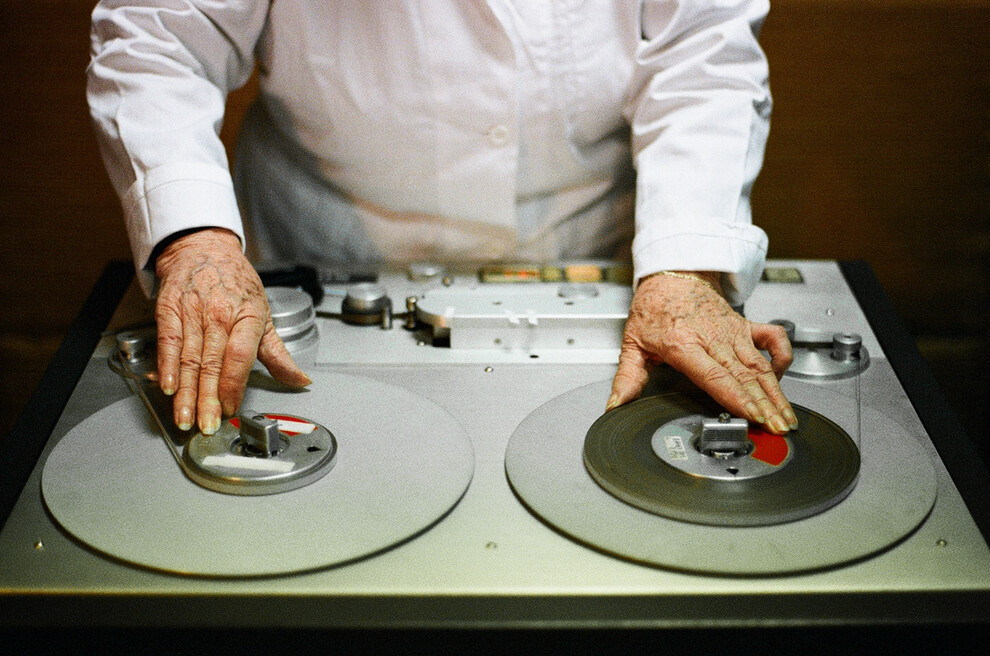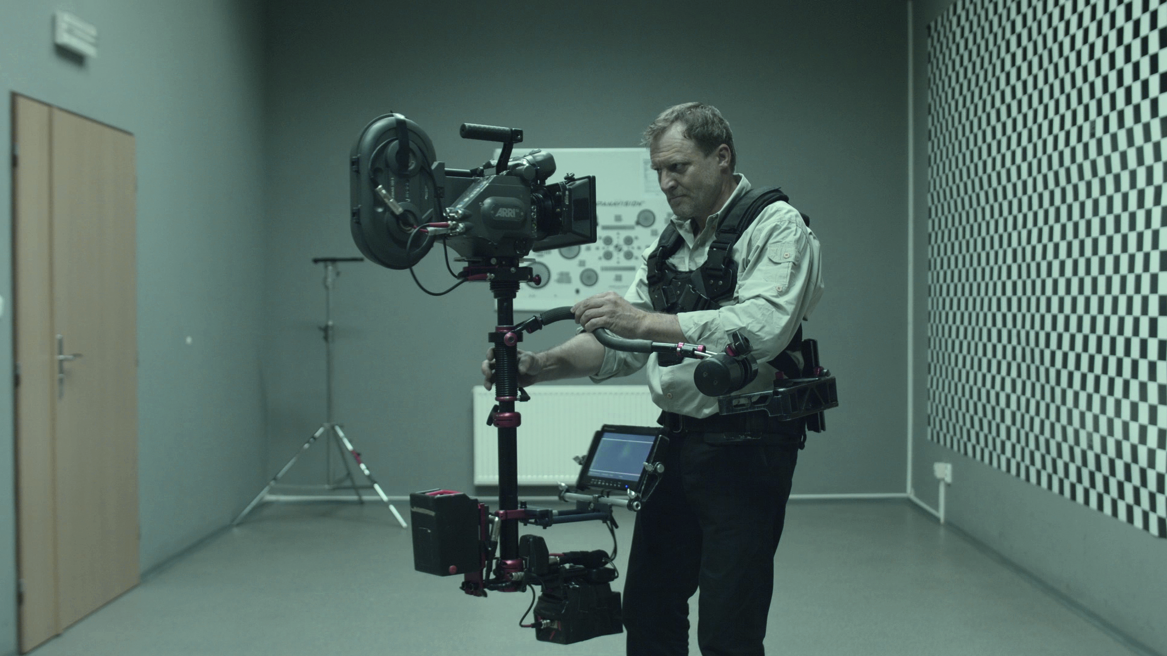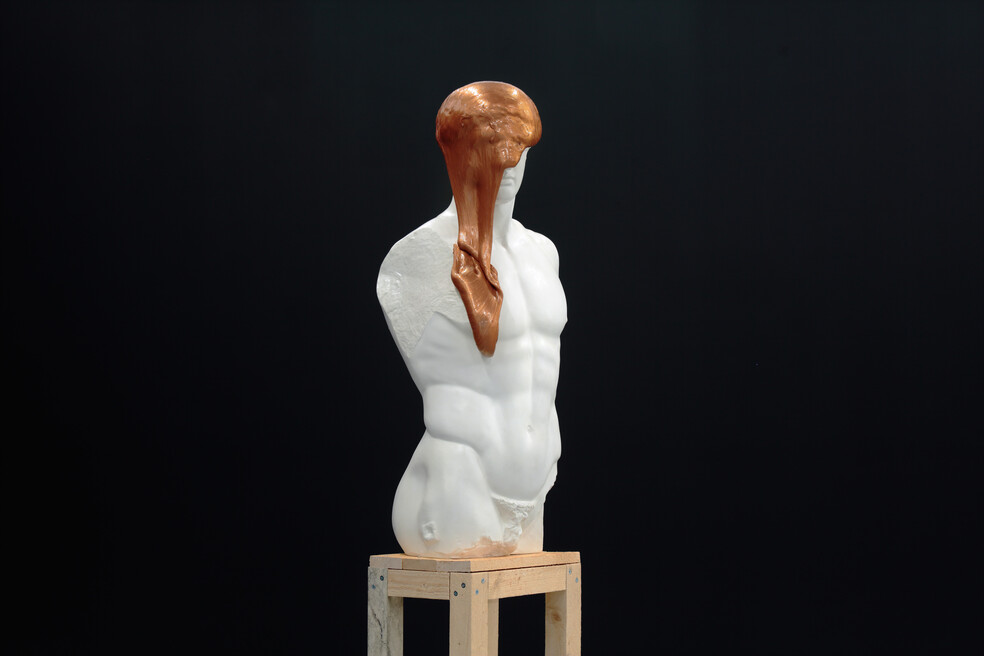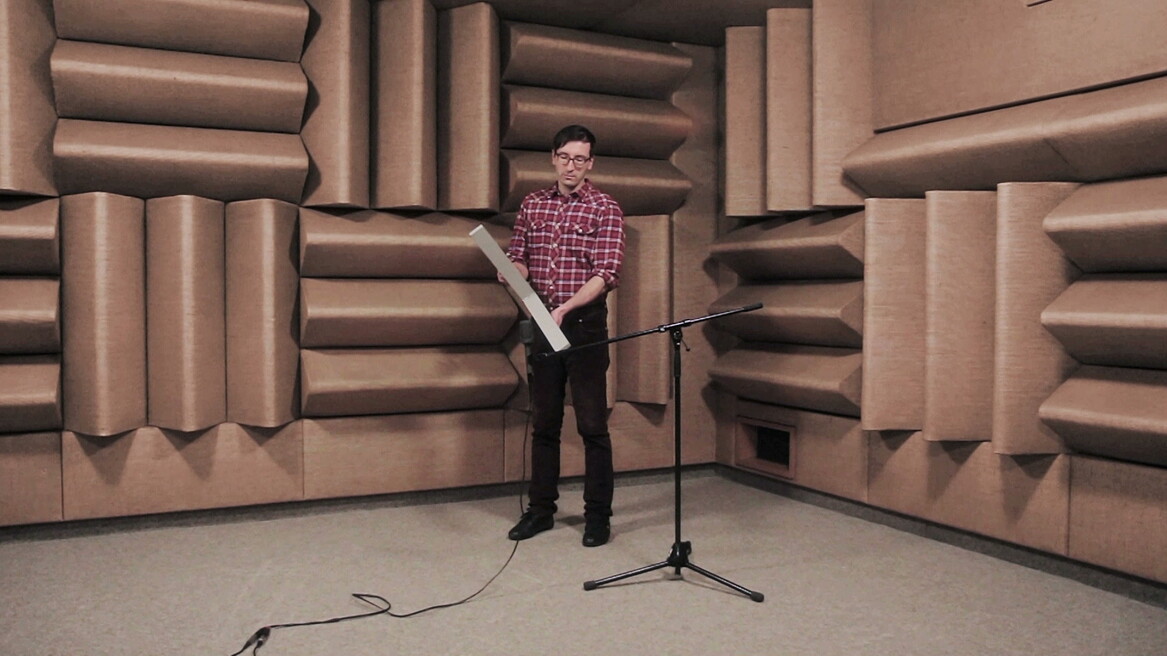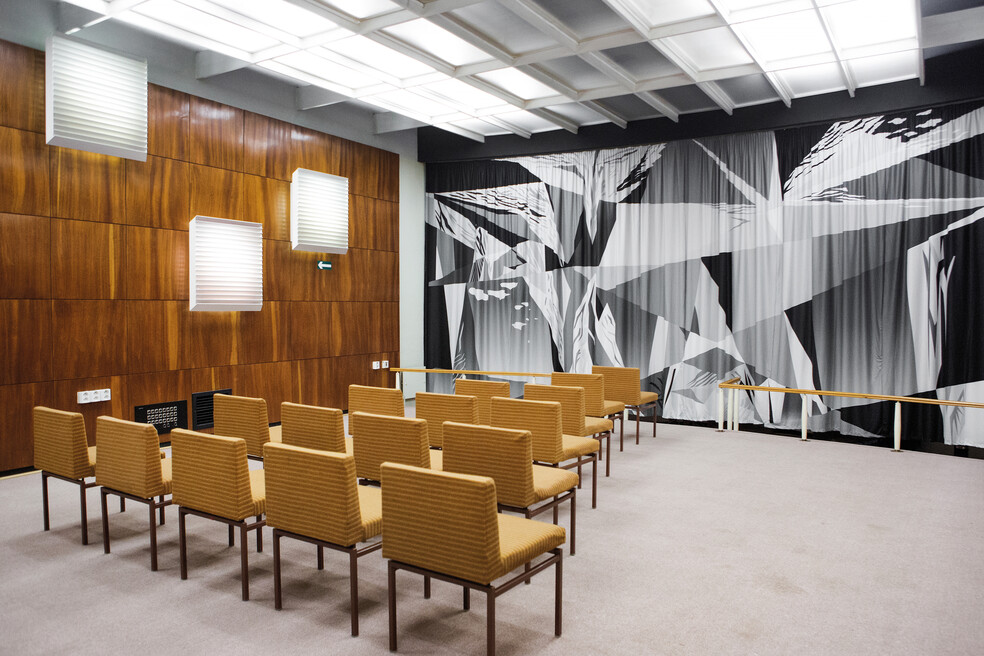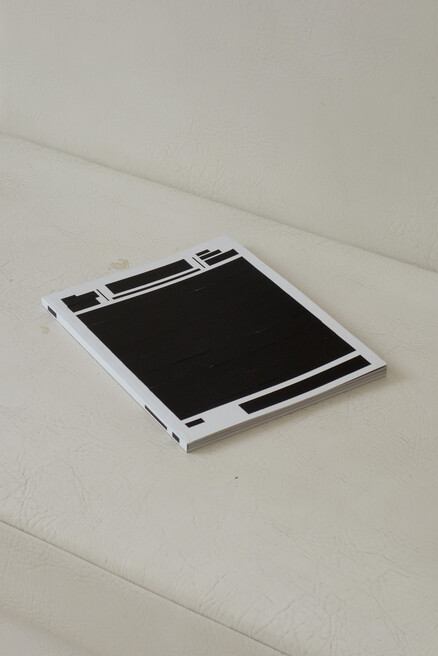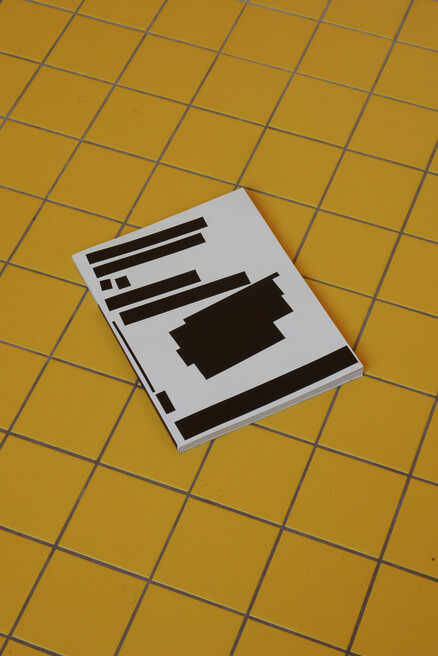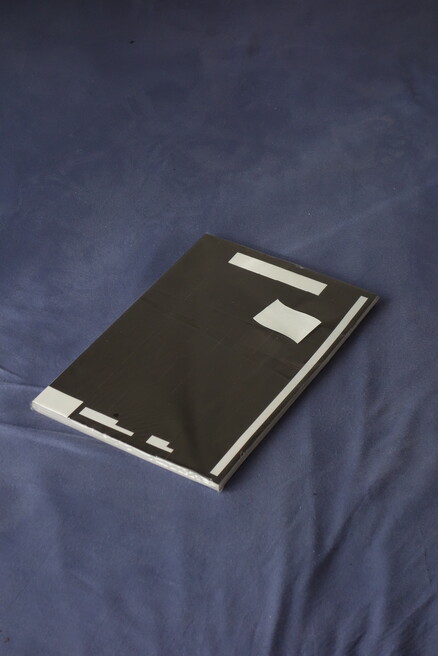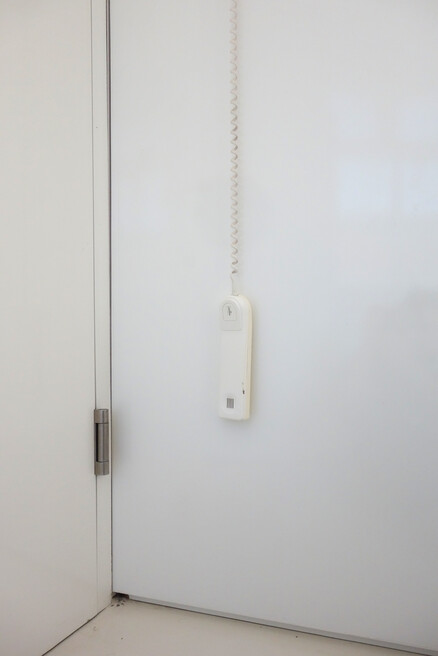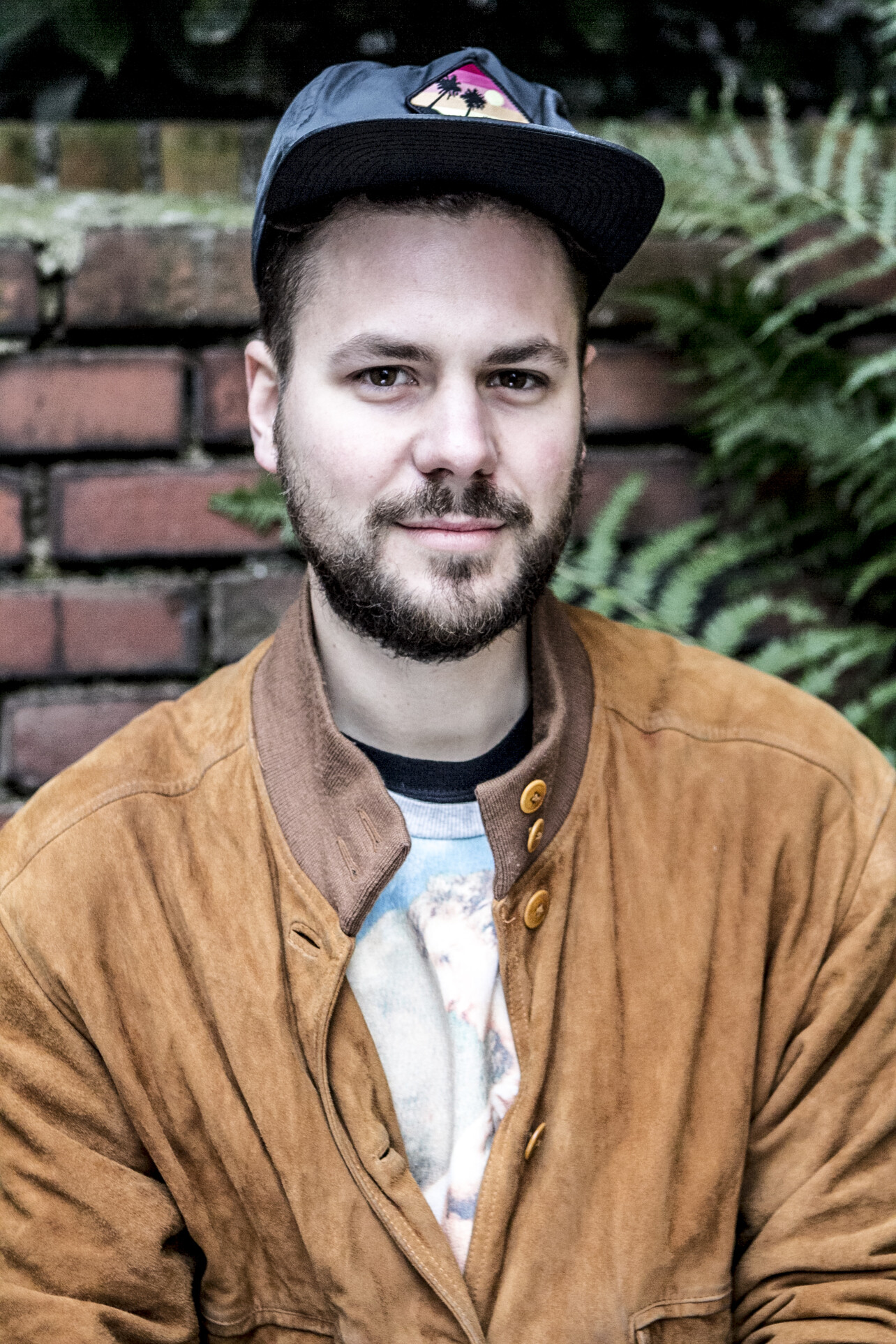Roman Štětina
Bereich: Installation, Video, Medienkunst, Sound Art
Key Facts
Nationalität
TschechienBereich
Installation, Video, Medienkunst, Sound ArtWohnort
PragEmpfehlende Institution
tranzit.org/ERSTE StiftungZeitraum
August 2016 - August 2016Roman Štětina was born in Kadaň in 1986. He currently lives and works in Prague, Czech Republic. Štětina graduated from the Academy of Fine Arts in Prague in 2015 after spending two years on the Städelschule in Frankfurt am Main in the classes Judith Hopf and Douglas Gordon.
Štětina is currently included in Manifesta 11, Zurich curated by Christian Jankowski. Current Solo shows include: Instruction for Use od Jiří Kolář (with Miroslav Buriánek), Plato, Ostrava, curated by Marek Pokorný and The Fortress of Solitude from the holy wood of eternal noise (with Larisa Sitar), MNAC Bucharest, curated by Anca V. Mihulet. Recent Solo shows include: 2015: Souvenir, Polansky Gallery, Prague; Lecture, Gallery of Fine Arts, Zlín (CZ) ; 2014: Mluv, abych tě viděl, Kabinet Gallery, TIC, Brno (CZ) . Other recent selected group shows include: 2015: All Watched Over, James Cohan Gallery.Silver Lining, National Gallery, Prague ; Graduates of the Academy of Fine Arts in Prague, National Gallery, Prague ; 7th Zlín Youth Salon, Gallery of Fine Arts, Zlín (CZ) ; The Importance of Being in a (Moving) Image, National Gallery, Prague (2015); Jindrich Chalupecky Award, National Gallery, Prague); Straight to Camera: Performance for Film, Modern Art Oxford ; 2014: Peripheral Vision, IV. Moscow International Biennale for Young Art, MMOMA; Explain Me Not, Autocenter Berlin.
His films and video works were presented at Anthology Film Archive, New York, International Film Festival Karlovy Vary (Czech Republic), goEAST, 14th Festival of Central and Eastern European Film in Wiesbaden in Germany, Bosse & Baum London, PAF Olomouc (Czech Republic), Delfina Art Foundation London, etc.
STUDIES
2013 – 2015 Städelschule, Frankfurt am Main, Judith Hopf class, Douglas Gordon class
2009 – 2015 Academy of Fine Arts, Prague (AVU), studio of Tomáš Vaněk
2006 – 2009 Institute of Art and Design, Pilsen, studios of Michal Pěchouček, Dušan Zahoranský, Adéla Matasová
2005 – 2006 University of West Bohemia, Pilsen, Faculty of Philosophy and Arts – Humanity studies
WORKSHOPS and AiR PROGRAMS
2016 Residency Unlimited, New York
2012 Studio of Guest Professor AVU, Florian Pumhösl
2012 Atelierhouse Salzamt, Linz, Austria
2012 Egon Schiele Art Centum, Cesky Krumlov, Czech Republic
2010 – 2011 Studio of Guest Professor AVU, Marcus Geiger
2008 Academy of Fine Arts and Design Bratislava, studio of Kisspal Szabolcz
AWARDS:
FilmPreis, Staedelschule Rundgang, 2015
Rector's Award for the Best Diploma Work, AVU Prague, 2015
Jindrich Chalupecky Award 2014
Open Frame Award, goEAST Film Festival Wiesbaden
Shortlisted for the HENKEL ART.AWARD. 2013
ESSL ART AWARD CEE 2011
SELECTED PERMANENT COLLECTIONS:
Deutche Telekom Art Collection, Germany
European Central Bank Art Collection, Germany
Vehbi Koc Foundation, Istanbul, Turkey
GALLERY REPRESENTATION:
Polansky Gallery, Prague, Czech Republic
<link http: romanstetina.com _blank external-link-new-window externen link in neuem>romanstetina.com
I have recently gained interest in the phenomenon of lottery, especially in the TV lottery programs. It stems both from my long term interest in recontextualizing aging technologies, personas and aesthetics related to TV or radio broadcasting, as well as to my current research conducted in NYC, as a part of my residential stay with Residency Unlimited. I grew up in an environment where lottery win equalled something great; a state of absolute bliss and carefreeness. It is a cruel irony of fate that something that is generally considered the utmost manifestation of luck can actually destroy long term and painstakingly formed interpersonal relationships.
Lottery drum is an object which is used for drawing the winning numbers; a transparent, closable vessel which used to be set in motion manually, by means of a crank. The design changed and became mechanised with the years. Nowadays, a system of air blowers which put the numbered balls in motion is used. An unwritten agreement between the lottery operator and the lottery players underlies each lottery draw. This relationship is based on a firm but fragile trust in the fairness of the draw. Everyone has a chance to win, there are no exceptions. This trust has been carefully formed since the beginning of the TV lottery programs. The TV studio in which the draw takes place is usually closely guarded; no one, with the exception of a few “chosen ones”, has access to it, it is usually prohibited to take photos or record anything in the lottery company building. The balls for drawing are weighted regularly to make sure that there is almost no difference between them and the complete set must be replaced after a few draws. The TV sessions used to feature a notary, state supervisor and TV presenter who did not appear in any other TV shows, perhaps in order to increase the feeling of trustworthiness of such TV lottery program. If it was possible, the draws used to be recorded as live sessions. In case that the draw had to be shown later in a form of a recording, there used to be minimum editing interference in it. No information graphics were present in the beginnings of TV lottery programs. As the viewers’ habits have changed, so has the form of the TV lottery programs. Lottery studios have undergone a change similar to the change which we have witnessed in classical TV studios that gradually turned into empty rooms covered in green camera background colour. All over the
Euro-American cultural sphere, the human element of lottery programs is disappearing. The emphasis of the object of the drawing as such becomes increasingly obvious. The notaries, state supervisors or presenters are slowly disappearing from the sessions. So is the voiceover informing about the winning numbers. Live camera shots showing the lottery drum and the winning numbers is often replaced by information graphics, sometimes even by a 3D animation. The result is a view of unpeopled rooms illuminated by pre-programmed lights,
pre-programmed cameras record the lottery drum and the act of drawing random winning numbers. The issue of the viewers’ trust has always been of a major importance. Due to falling trustworthiness, the honourable state supervisors and notaries have been moved aside. Their position has been taken over by the seemingly non-corruptible drawing machine and the virtual, i.e. somehow perfect, reality. The trust has thus changed into faith.
I am driven to the very process and the history of documenting and displaying the lottery procedures. I intend to map the transition from a more “physical” and perhaps almost “naïve” approach, to the contemporary wave of digitalization, where the human element and the somewhat shaky but tangible grounds gradually disappear. Despite the system changes, the emotions these mechanisms produce in audiences and participants remain rather immutable: the enthusiasm as well as suspicion, the disbelief contrasting the awe of the immense possibilities hidden beneath this seemingly simple, but extremely powerful structure. Beyond all contradictions, in the end there must be trust: we need to believe in the system in order to make it work.
The lottery here would be seen as a metaphor for larger social, political or institutional systems, where the irrational aspects such as luck, surprise, or failure constantly reappear, while technical and structural “progress” runs in the background. However sophisticated the game is, in the end we just find ourselves helplessly waiting for the “lucky number”, not even sure if that won’t actually be another disaster.
My stay in Vienna spanned from the first day of August to the last day of the same month.
Before I went, my friends warned me that Vienna usually sleeps in August. They thought I would regret not fighting for a better month. They were wrong, however. Vienna in August did not seem sleepy at all to me. If, occasionally, the passing of time slowed down a bit, it was an opportunity for me to do some self-studying, reorganize my work, start creating new things and relax. From this point of view, the stay in Vienna was one of the most significant ones I have ever experienced.
I was lucky to get assigned into the Studio 501. At first, it seemed cold and austere to me. Gradually I learned to appreciate its cleanness and simplicity which inspired for work and contemplation.
For a longer period of time, I had an urge to compensate for my frequent work at a computer by some kind of manual activity which would require fine motor activity. I spent several long hours in an art shop trying to find suitable tools. The result is (so far unfinished) series of photographs titled Current Issue in which I simplified designs of current art magazine cover pages in a very elementary way.
Through an open window I could hear sound compositions from a Tonspur sequence which helped me finish a sound composition project ordered by the Czech Radio titled Návod k upotřebení Miroslava Buriánka (Instructions for Use of Miroslav Buriánek) which you can listen to here: www.rozhlas.cz/radiocustica/projekt/_zprava/roman-stetina-navod-k-upotrebeni-miroslava-burianka--1644349)
At the end of my stay, I visited the office of Erste Foundation which co-financed my residential stay. I am still grateful to them for giving me, apart from books, also honey originating from beehives located on the roof of the Secession Building. Since then, I am very keen on urban bee-keeping and hope to be able to start the first bee colonies in the garden of the Academy of Fine Arts in Prague soon.
